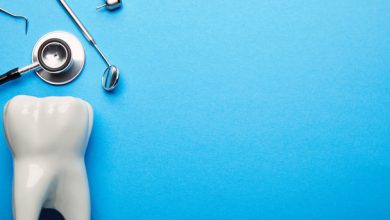How Much Does Dental Care Really Cost? Discover the Truth!

Dental care costs vary depending on the specific treatment and location. Dental services may range from routine checkups to complex procedures, with prices influenced by factors such as the dentist’s experience, the clinic’s location, and the patient’s insurance coverage.
It is essential to consult with a dentist and inquire about the costs associated with the desired treatment to get an accurate estimate. Understanding the potential expenses will help individuals plan accordingly and make informed decisions about their oral health.
Regular dental care is critical to maintain optimal oral hygiene and prevent more significant issues in the long run. Remember that cost should not be the only determining factor when seeking dental care; quality and expertise should also be considered.
Dental Insurance And Coverage
Dental care costs can vary significantly, depending on several factors. One major factor that affects the cost is dental insurance coverage. Understanding the different types of dental insurance plans and their coverage options is important for managing dental expenses.
| Types of dental insurance plans | Coverage options and limitations | Co-pays, deductibles, and premiums |
|---|---|---|
|
|
|
Understanding the coverage options and limitations of different dental insurance plans is essential for estimating dental care costs. It’s important to review your plan carefully and consider the co-pays, deductibles, and premiums to determine the best option for your needs.
Common Dental Procedures And Costs
When it comes to dental care, many people wonder about the cost of common procedures. Whether it’s getting an annual check-up and cleaning or needing a filling or root canal, understanding the costs involved can help you plan your budget accordingly. The price of these procedures can vary depending on factors such as the location of the dental office, the complexity of the procedure, and any additional treatments required.
For annual check-ups and cleanings, the average cost can range from $75 to $200, depending on where you live. Fillings, which are used to repair cavities, can cost between $75 and $200 per filling, whereas root canals, which treat infected or damaged tooth pulp, can range from $300 to $2,000 per tooth.
In some cases, tooth extractions may be necessary, with costs ranging from $150 to $650 per tooth. For those needing a tooth replacement, dental implants can cost anywhere from $1,000 to $4,000 per tooth.
Orthodontic treatment, including braces or aligners, is another common dental procedure. The average cost of orthodontic treatment can vary greatly, from $3,000 to $7,500.
Ultimately, it’s important to keep in mind that these costs are general estimates and can vary depending on your location and individual dental needs. It’s always best to consult with your dentist for more specific information regarding the costs associated with the dental procedures you may require.
Additional Costs And Considerations
When seeking dental care, it is important to consider the additional costs that may be involved. One common additional cost is X-rays and diagnostic tests, which are necessary for a thorough examination. These tests can help to identify any dental issues that may require treatment. Sedation and anesthesia are another consideration, especially for those with dental anxiety or undergoing more complex procedures. The cost of sedation or anesthesia will depend on the type used and the duration of the treatment. Specialist consultations may also be necessary, particularly if the patient requires treatment from an orthodontist, oral surgeon, or periodontist. Finally, emergency dental care may incur additional costs, as immediate treatment may be required outside of regular office hours. It is important to factor in these additional costs and considerations when budgeting for dental care.
Maintenance And Prevention
Regular oral hygiene practices play a crucial role in maintaining good dental health. Brushing your teeth twice a day with fluoride toothpaste helps remove plaque and prevent tooth decay and gum disease. Flossing between teeth and along the gumline helps remove food particles and plaque that cannot be reached by brushing alone. A balanced diet that is low in sugary and acidic foods and drinks is also important for oral health. Consuming foods rich in calcium, phosphorus, and Vitamin C helps promote strong teeth and gums.
The role of diet and nutrition in dental health
Your diet and nutrition have a significant impact on your dental health. Foods high in sugar and carbohydrates can contribute to tooth decay, so it’s essential to limit consumption of sugary drinks and snacks. On the other hand, foods like cheese, yogurt, leafy greens, and nuts provide essential vitamins and minerals that promote dental health. Drinking plenty of water is also beneficial for maintaining good oral hygiene as it helps to wash away food particles and stimulates saliva production, which is important for neutralizing acids in the mouth.
Fluoride treatments and dental sealants can provide additional protection against tooth decay. Fluoride treatments involve applying a fluoride gel or varnish to the teeth, which helps strengthen the enamel and makes it more resistant to acid attacks. Dental sealants are thin, plastic coatings that are applied to the chewing surfaces of the back teeth. They form a protective shield that seals out bacteria and food particles, reducing the risk of cavities. These preventive measures, when combined with regular dental check-ups and cleanings, can help ensure optimal dental health and reduce the need for costly dental treatments in the future.
Choosing Affordable Dental Care Providers
Choosing Affordable Dental Care ProvidersWhen it comes to dental care, cost is a significant factor to consider. Researching and comparing dental clinics can help you find affordable options. Start by looking for discount dental plans and packages offered by different providers. These plans often include discounted rates for dental procedures and treatments.
Another essential aspect to evaluate is the reputation and qualifications of dentists. Look for reviews and ratings from previous patients to gauge the quality of care provided. Additionally, check if the dentists are licensed and have the necessary credentials.
By carefully researching and comparing dental clinics, considering discount plans, and assessing dentist qualifications, you can find affordable dental care providers that meet your needs and budget.

Credit: www.gofundme.com
Communication And Negotiation
When it comes to dental care costs, effective communication and negotiation are key. Discussing treatment options and costs with your dentist is the first step towards understanding the financial aspect of your dental care. Inquiring about flexible payment plans or financing options can help alleviate the burden of upfront costs. Many dental practices offer these options to make dental care more affordable. Another option to consider is exploring dental schools or non-profit organizations that provide reduced-cost services. Dental schools often have clinics where supervised students provide dental care at a reduced rate. Non-profit organizations may also offer programs or clinics that provide dental care to low-income individuals at a lower cost. By actively engaging in communication and exploring various resources, you can find affordable dental care options that meet your needs.
Setting Up A Dental Savings Account
Setting up a dental savings account can be a great way to save money on dental care expenses. These accounts work much like a regular savings account, but the funds can only be used for dental-related expenses.
An overview of dental savings accounts shows that they are typically offered through private companies or employers. They can be funded through payroll deductions or regular contributions, and the funds can be used to pay for a variety of dental services, including cleanings, fillings, and even orthodontic treatment.
There are several benefits and drawbacks of dental savings accounts to consider. On the positive side, these accounts allow individuals to save money specifically for dental care, which can help alleviate the financial burden of unexpected dental expenses. Additionally, funds in these accounts often roll over from year to year, meaning they can be used for future dental needs. However, dental savings accounts typically don’t cover all dental costs, and there may be restrictions on what procedures are eligible for coverage.
To maximize savings and minimize expenses with a dental savings account, it’s important to regularly contribute to the account and take advantage of any employer matching contributions. It’s also helpful to compare prices for dental services and consider different providers to find the best value. Lastly, practicing good oral hygiene and preventative care can help reduce the need for costly dental procedures in the first place.
Incorporating Dental Care Into Your Budget
Assessing your oral health needs and priorities is the first step in determining how much dental care will cost. Regular check-ups and cleanings are essential for maintaining good oral health, but they are just one part of the equation. Estimating and budgeting for routine dental expenses requires considering other factors such as X-rays, fillings, and preventive treatments like fluoride applications.
Long-term financial planning is also necessary for major dental treatments. Procedures like root canals, dental implants, and orthodontic treatments can be costly, and it’s important to prepare financially for these expenses. Considering dental insurance or discount plans can help mitigate the financial impact of these treatments.
By assessing your oral health needs, estimating routine expenses, and planning for major treatments, you can incorporate dental care into your budget effectively. Remember to prioritize your oral health to prevent more significant issues and expenses in the long run.
Importance Of Dental Care For Overall Health
Good oral health is not just about having a bright smile, it also plays a vital role in maintaining overall health. Research has shown a direct link between oral health and systemic health. Neglecting dental care can have financial implications in the long run. Dental problems such as gum disease and tooth decay can lead to more serious health issues like cardiovascular disease, diabetes, respiratory infections, and even dementia.
Investing in preventive dental care is crucial for long-term savings. Regular dental check-ups, cleanings, and maintaining good oral hygiene can help prevent costly dental procedures such as fillings, root canals, and extractions. Early detection of dental problems can also help avoid more expensive treatments later on. Taking proactive steps to maintain oral health not only saves money but also improves overall well-being.
Frequently Asked Questions Of How Much Does Dental Care Cost?
What Is The Average Cost Of Dental Treatment?
The average cost of dental treatment varies depending on the procedure and location. However, on average, dental treatments can range from $100 for basic check-ups to $10,000 for complex procedures like implants or orthodontics. It is best to consult your dentist for an accurate estimate.
How Much Does A Dentist Appointment Cost In The Us?
Dentist appointment prices in the US vary, but they can range from $75 to $200 for a basic check-up. Additional treatments such as fillings or extractions may cost extra. It’s best to consult with your dentist or insurance provider for exact pricing.
What Is The Cheapest Way To Get Your Teeth Fixed?
The cheapest way to fix your teeth is by visiting a dental school where supervised students can provide treatments at lower costs. Another option is to seek a dental clinic that offers discounted or sliding scale fees. Researching dental insurance plans or applying for low-income assistance programs can also help reduce costs.
How Much Is A Tooth Extraction In Ohio?
The cost of a tooth extraction in Ohio can vary, but on average, it ranges from $100 to $350. Prices may be higher depending on the complexity of the extraction and if anesthesia or other services are needed. It’s best to consult with a dental professional for an accurate estimate.
Conclusion
To sum it up, dental care costs can vary depending on various factors such as location, treatment type, and insurance coverage. It is essential for individuals to research and compare prices to find the most affordable options. Regular dental check-ups and good oral hygiene practices can help prevent expensive procedures in the long run.
Remember, prioritizing dental health is crucial to overall well-being. Take control of your dental care and make it a priority in your budget and lifestyle.





